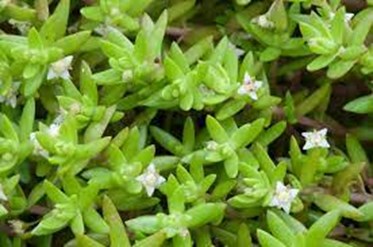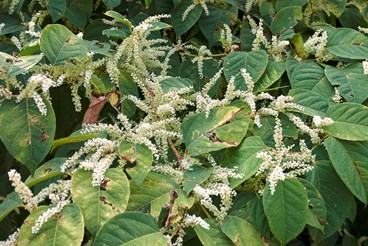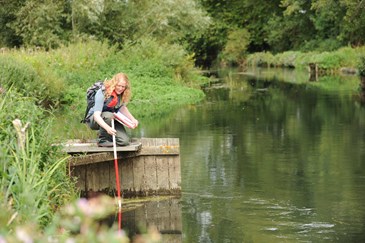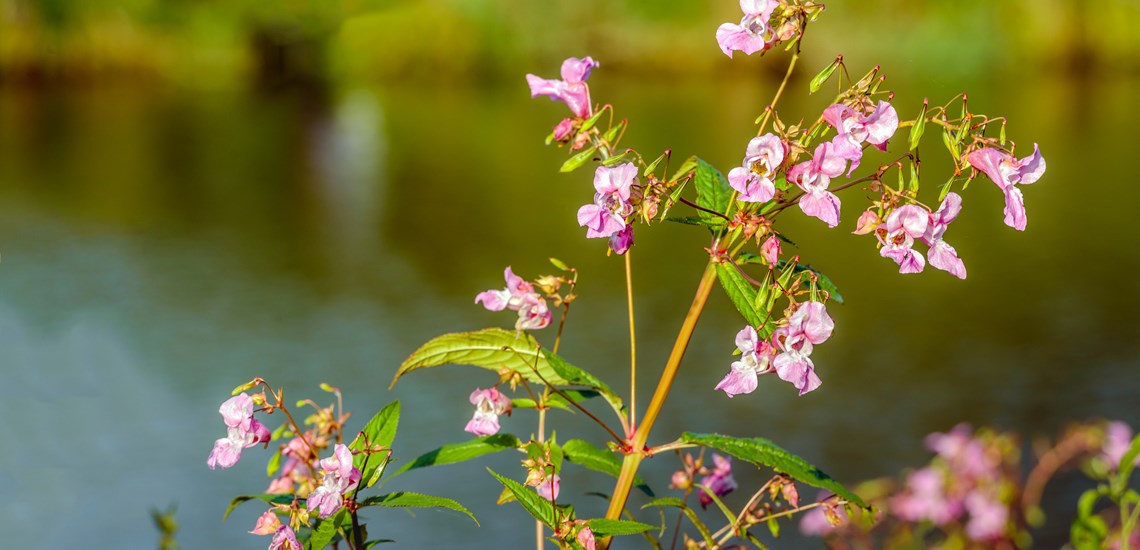Invasive non-native species (INNS) are animals or plants that have come from other parts of the world and have the ability to spread outside their native locations, causing damage to the environment, the economy, our health or the way we live.
We’re investing in treatment, training and trials to manage and remove INNS that affect our sites – so our services can run smoothly and we are doing our bit to protect local plants and wildlife.
The facts
In Britain, INNS have led to dramatic declines of some of our native species, including the water vole, white-clawed crayfish, and red squirrels.
They are easily spread; for example many invasive aquatic species are small and can survive out of water for over two weeks on damp clothing or equipment.
If they’re not spotted quickly it can be very difficult to remove them – as well as being very expensive for specialist treatments. At the moment, INNS cost the UK economy at least £1.8billion per year.
You could also be fined up to £5,000 or be sent to prison for up to two years if you allow contaminated soil or plant material from any waste you’re getting rid of to spread into the wild.
INNS we deal with
Crassula Helmsii (A.K.A. New Zealand Pigmyweed/Australian Stonecrop)

 Crassula Helmsii is commonly found on wastewater treatment bio filter beds, because the conditions are perfect for growth; wet/damp with lots of light!
Crassula Helmsii is commonly found on wastewater treatment bio filter beds, because the conditions are perfect for growth; wet/damp with lots of light!
This species can form dense mats of plant material, which, if we don’t manage them, can prevent the arms of a filter bed from turning properly and therefore risks not treating the wastewater correctly. It also kills off our native species and can deprive a waterbody of oxygen and light.
Unfortunately, it’s very hard to eradicate Crassula, which means our management of this INNS is even more important. It’s vital that operators at sites which have Crassula on filter beds must check, clean and dry all of their clothes and equipment so they don’t spread it to other sites.
Himalayan Balsam

Himalayan Balsam (HB) is usually found along riverbanks, so is likely to be near intakes of our water supply sites, or on the outfalls from our wastewater sites, but it can be found along our access roads or around the site boundary.
HB kills off our native species in ecologically sensitive areas, particularly riverbanks. It grows in dense stands along the banks and can slow river flows during heavy rain, increasing the likelihood of flooding. Die back of huge swathes of HB over winter can then leave riverbanks bare and at risk of erosion.
HB is only able to spread during the time it is producing seeds (mid July to late September), so common practice is to manually pull the plants during the winter to help reduce re-growth. This is informally known as ‘balsam bashing’.
Giant Hogweed

 Similar to HB, you’re likely to find Giant Hogweed near water, but it can be also be found around our site boundaries.
Similar to HB, you’re likely to find Giant Hogweed near water, but it can be also be found around our site boundaries.
Giant Hogweed sap can cause skin blisters following exposure to sunlight. Much like HB, other negative impacts include killing off our native flora, eroding riverbanks and increasing the risk of flooding.
The treatment or management of Giant Hogweed options are chemical spraying or manual pulling
Japanese Knotweed


Japanese Knotweed grows aggressively along railways, waterways, in parks and gardens across the country. Without professional help, it can be incredibly challenging to deal with.
Again, it’s an INNS that kills off our native flora, contributes to river bank erosion and increases the likelihood of flooding. It can also cause significant delays and cost to building developments as well as structural damage to established buildings.
Specialist treatment is needed to manage Japanese Knotweed. The plant’s stems are injected with chemicals over a period of time in order to kill it from the root.
What we’re doing


We’re committed to understanding more about the risk of introduction/spread of INNS via all of our activities, and we have a training programme, which will be carried out over the next four years, to enhance our knowledge of INNS and how to practice biosecurity to prevent their spread.
Here’s an example of the sort of trials we’re involved in.
A ‘mitey’ trial at Bewl Water
In the winter of 2019 assistant Ecologist Tom Alexander and his colleague Lorna Brooks approached the Centre for Agriculture and Bioscience International (CABI) to see if they could help field trials of a new biocontrol for Crassula Helmsii. CABI had found that a microscopic mite from the plants native home could reduce plant growth by up to 50% in laboratory trials.
Crassula was collected from our Bewl Water Reservoir and was infected with the mite. In the summer of 2020 they were able to return to site with CABI and the Bewl Estate and replant the infected Crassula.
This project is at the cutting edge of invasive non-native species management and is helping to develop a control that could eventually be rolled out nationwide. It also demonstrates our commitment to doing everything to we can to manage the risk of this environmentally damaging species.
